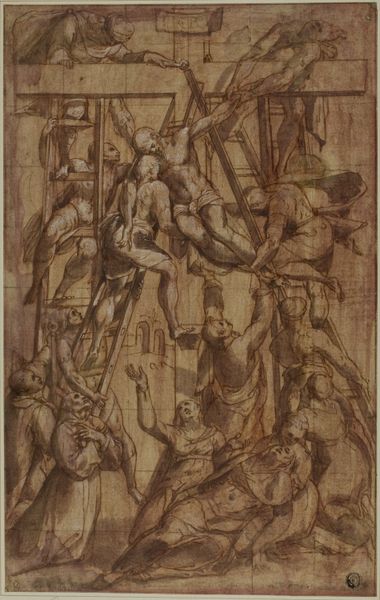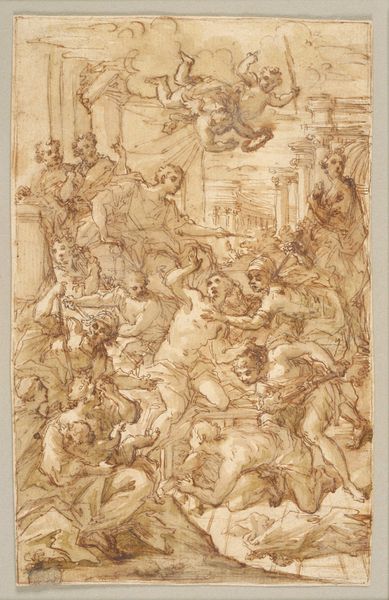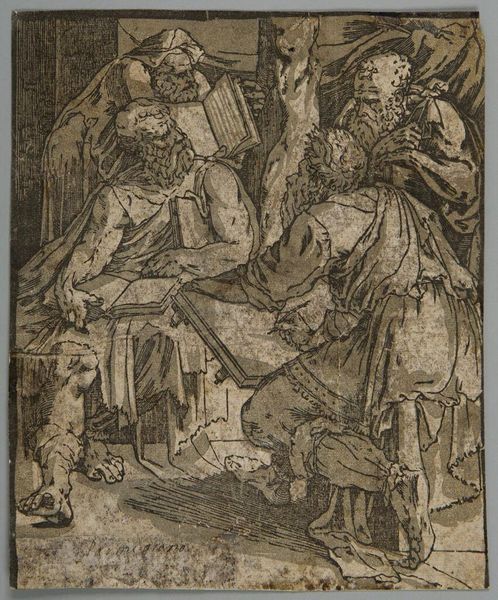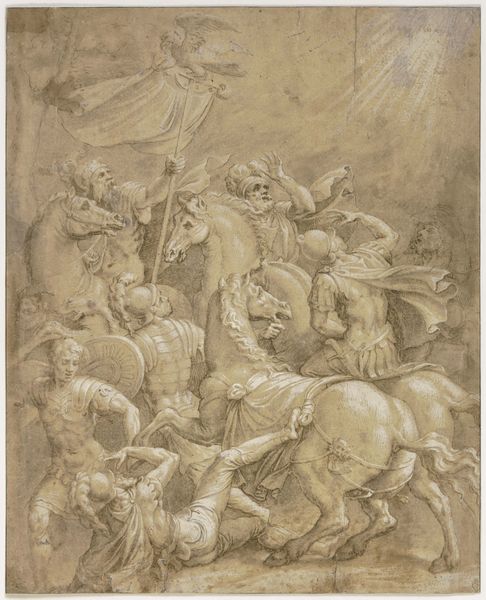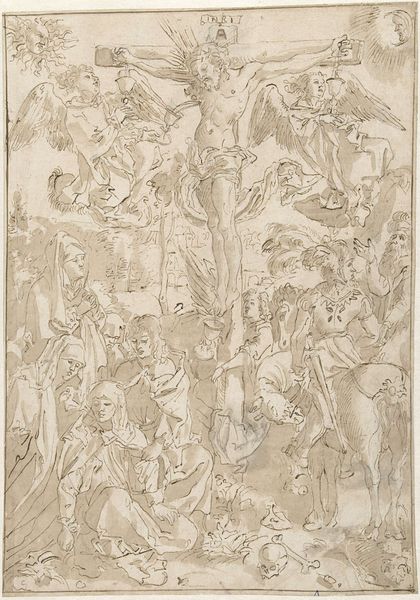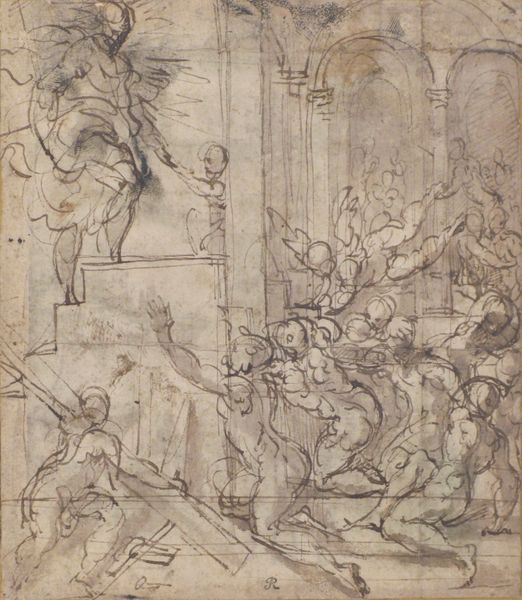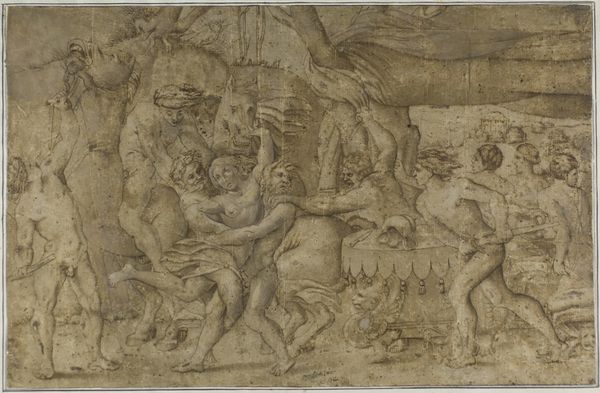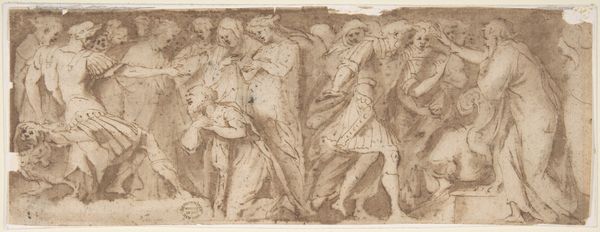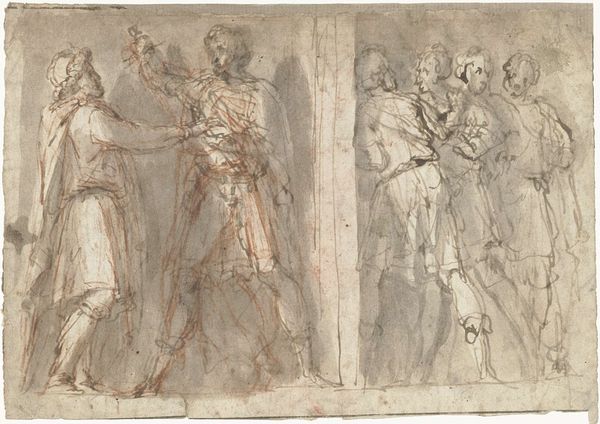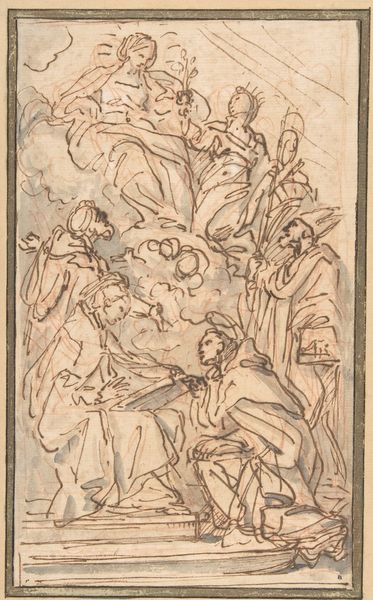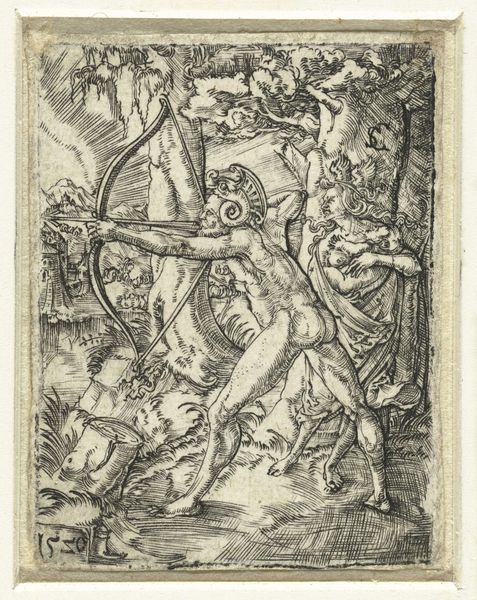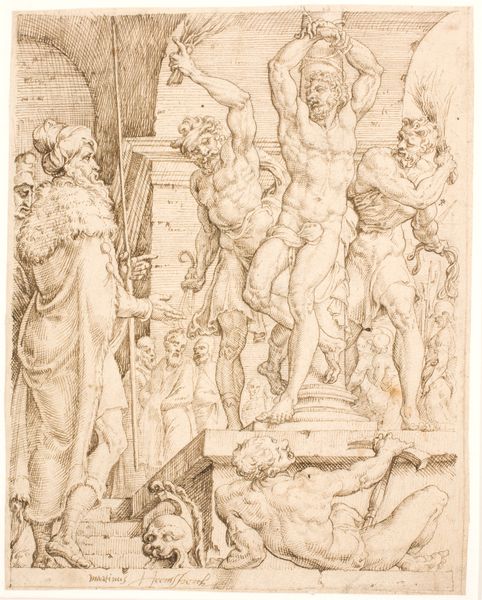
drawing, ink, charcoal
#
drawing
#
charcoal drawing
#
mannerism
#
figuration
#
oil painting
#
ink
#
charcoal
#
history-painting
Dimensions: overall: 19.9 x 16 cm (7 13/16 x 6 5/16 in.)
Copyright: National Gallery of Art: CC0 1.0
Editor: This is "The Beheading of Saint John the Baptist," a drawing in ink and charcoal by Hans Stutte, created around 1617. It's a pretty gruesome scene, but the muted tones almost soften the violence. What do you see in this piece? Curator: Beyond the literal depiction of Saint John's execution, I see a powerful commentary on power dynamics and the silencing of dissent. Look at the central figure holding the head aloft. How does his pose strike you? Editor: He seems triumphant, like he’s presenting a trophy. Almost theatrical, I guess? Curator: Exactly. This theatricality points to the ways public executions were used to reinforce political power. The artist is not just showing us a beheading, but is implicitly posing critical questions about who benefits from this spectacle and why. Notice how Salome is present, too. Editor: Yes, she is, receiving the head. Is her role simply that of a passive recipient? Curator: I don't think so. Consider the ways women were often instrumentalized – and punished – within patriarchal structures. This isn't just about religious martyrdom; it’s about the complex interplay of gender, power, and violence. We might ask, what is Stutte trying to tell us about the era through this scene? Editor: So, it’s less about the religious aspect and more about a political and social critique? Curator: The religious aspect provides the narrative framework, but Stutte seems deeply invested in exploring the sociopolitical undercurrents. By questioning the performance of power, the subjugation of women, and the silencing of dissenting voices, he compels us to confront uncomfortable truths about authority. Editor: That gives me a lot to think about. It completely shifts my understanding of the artwork from a purely historical depiction to a powerful social statement. Curator: Precisely! That's the beauty of engaging with art through an intersectional lens; we begin to see its resonance with contemporary concerns.
Comments
No comments
Be the first to comment and join the conversation on the ultimate creative platform.
